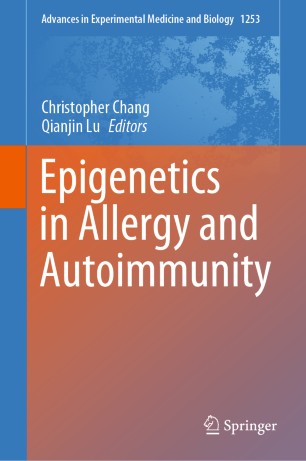اپی ژنتیک در آلرژی و خودایمنی ۲۰۲۰
Epigenetics in Allergy and Autoimmunity 2020
دانلود کتاب اپی ژنتیک در آلرژی و خودایمنی ۲۰۲۰ (Epigenetics in Allergy and Autoimmunity 2020) با لینک مستقیم و فرمت pdf (پی دی اف)
| نویسنده |
Christopher Chang, Qianjin Lu |
|---|
| تعداد صفحهها |
403 |
|---|---|
| نوع فایل |
|
| حجم |
7 Mb |
| سال انتشار |
2020 |
89,000 تومان
معرفی کتاب اپی ژنتیک در آلرژی و خودایمنی ۲۰۲۰
این کتاب به نقش رو به رشد اپی ژنتیک در پاتوژنز بیماری می پردازد و سهم تغییرات اپی ژنتیکی را در شروع و پیشرفت بیماری بررسی می کند. نقش اپی ژنتیک در تسهیل تأثیرات محیطی بر آلرژی و بیماری های ایمونولوژیک بررسی خواهد شد. این کتاب به سه بخش تقسیم شده است – بخش اول مقدمه ای بر اپی ژنتیک و روش های توسعه یافته برای مطالعه اپی ژنتیک است، بخش دوم به اپی ژنتیک در بیماری های آلرژیک می پردازد و بخش سوم به اپی ژنتیک در بیماری های خودایمنی می پردازد. با گسترش سریع دانش در مورد چگونگی تنظیم ژن ها و اینکه چگونه این مقررات بر فنوتیپ های بیماری تأثیر می گذارد، این کتاب برای محققان باتجربه و همچنین کسانی که تازه یک برنامه تحقیقاتی اپی ژنتیک را راه اندازی می کنند جذاب خواهد بود. همچنین برای آلرژیست ها، ایمونولوژیست ها، روماتولوژیست ها و متخصصان پوست درگیر در عمل بالینی به عنوان منبعی برای درک مبانی پزشکی شخصی شده و دقیق، جالب خواهد بود. به عنوان مثال، نقش اپی ژنتیک در پاتوژنز بسیاری از اختلالات آلرژیک و خودایمنی و چگونگی تعیین فنوتیپ های بیماری در این کتاب به طور گسترده مورد بررسی قرار خواهد گرفت. بنابراین، این کتاب به پر کردن شکاف در منابع موجود در مورد اپی ژنتیک در بیماری های آلرژی و خودایمنی کمک می کند.




